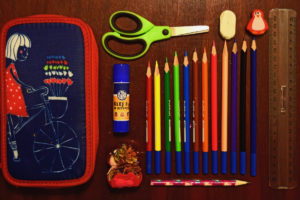 The retail industry loses an approximate $45 billion a year due to shoplifting, organized retail crime, merchant, and clerical errors. For the small retail owner, any loss due to shoplifting puts a financial strain on their ability to do business, hire more personnel or invest and grow their business.
The retail industry loses an approximate $45 billion a year due to shoplifting, organized retail crime, merchant, and clerical errors. For the small retail owner, any loss due to shoplifting puts a financial strain on their ability to do business, hire more personnel or invest and grow their business.
The competition in every industry is brutal, and the retail industry is no different. The online option the customer has of buying whatever they need or want with the click of a button is especially hard for a small retail owner. Their inventory and profit margins they’re dealing with are nothing compared to the big-box chains’, and any loss they suffer is particularly painful for their profits.
There are many businesses that cannot afford to invest in new technology to deter or prevent shoplifting, and they are left with the option of losing more cash and inventory or close their doors permanently, all due to this crime. But, if they cannot invest in technology, and they cannot hire more personnel, what are some low-cost options they can implement in their store to deter or prevent shoplifting?
- Customer Service
One of the great assets these small retail stores have compared to the big chains or online stores is the customer service they can provide to their customers. Providing the customer with a greeting when they walk into your store and offering them great customer service has shown to decrease shoplifting and increase customer satisfaction.
A satisfied customer is also more likely to promote your business. In today’s social network platforms, a bad experience can potentially reach thousands of customers with disastrous backlash for you and your store, but a good experience can also do the same, it can reach many potential customers that want to do business with you. Treat your customers as a business ambassador for your business, and you will see the results in your profits.
2. Inventory
Keeping a good inventory of what’s selling and the number of items you are missing-whether they were sold or stolen-from the shelves can help you keep an accurate count of the merchandise.
Do you know at a minute’s notice what inventory you have on hand? There are software solutions that help retailers keep track of such matters, and allows them to have reports daily and online to help them make adjustments, order more inventory if necessary, and know at a moment’s notice the state of their inventory.
3. Organization
The design, cleanliness and how well your product displays are kept are important in keeping shoplifting at a minimum. Well lit aisles, merchandise displayed properly and organized can make the shelves look pretty and the items displayed can allow you and your employees to account for the merchandise with a quick look to the shelves.
4. Diligence
Your employees are your best bet to deter and prevent shoplifting. Research has shown happy employees are the best asset your company has for success, and in this case to deter and prevent shoplifting. Salaries are not the only incentive your employees look for when entering a new business, treating them with respect and allowing them the ability to prove and express themselves are key to the success of any business.
Shoplifting affects every citizen and every member of society. The way you respond to a shoplifting accident and the way you treat shoplifters reflect on how you conduct yourself and your business.
 In every career, there are people, places, and things that help to shape who you become in that career. A Retail Loss Prevention career is no different. My career in Loss Prevention goes back nearly 27 years. A long time ago in a department store not far away I was hired as a Loss Prevention Associate with only my military experience and a college degree in hand. I had absolutely no Loss Prevention background. There have been lessons learned along the way that shaped the way I approached Loss Prevention and the way I developed my style of working with people and managing others.
In every career, there are people, places, and things that help to shape who you become in that career. A Retail Loss Prevention career is no different. My career in Loss Prevention goes back nearly 27 years. A long time ago in a department store not far away I was hired as a Loss Prevention Associate with only my military experience and a college degree in hand. I had absolutely no Loss Prevention background. There have been lessons learned along the way that shaped the way I approached Loss Prevention and the way I developed my style of working with people and managing others. How many times have you caught yourself in a conversation with another manager or a supervisor discussing a seasonal merchandise question or an inventory preparation question and found yourself saying, “I think we did it this way” or “ It seems to me customers were buying such and such last year”? It can be frustrating, especially when the discussion may influence whether an item should be carried or if it was carried the prior year was it a flop? The same thing happens with inventory. Did we start prepping 5 days out? No? Maybe it was 3 days out. Having checklists can make these conversations fewer in number and improve productivity as well as sales performance.
How many times have you caught yourself in a conversation with another manager or a supervisor discussing a seasonal merchandise question or an inventory preparation question and found yourself saying, “I think we did it this way” or “ It seems to me customers were buying such and such last year”? It can be frustrating, especially when the discussion may influence whether an item should be carried or if it was carried the prior year was it a flop? The same thing happens with inventory. Did we start prepping 5 days out? No? Maybe it was 3 days out. Having checklists can make these conversations fewer in number and improve productivity as well as sales performance. Having to balance a customer friendly environment that makes patrons feel like you want their business and keeping a structure in place that ensures the store is profitable can be difficult. This is especially true when it comes to customer returns. At times, return policies even seem to put store management and loss prevention teams at odds with each other. On one hand, stores are afraid that a strict return policy will turn off regular customers and result in a loss of business. On the other hand Loss Prevention teams in their efforts to…well…prevent losses have a tendency to want to tighten procedures on everything. There is an argument to be made for both sides but there may also be a happy middle ground where both can come to an agreement.
Having to balance a customer friendly environment that makes patrons feel like you want their business and keeping a structure in place that ensures the store is profitable can be difficult. This is especially true when it comes to customer returns. At times, return policies even seem to put store management and loss prevention teams at odds with each other. On one hand, stores are afraid that a strict return policy will turn off regular customers and result in a loss of business. On the other hand Loss Prevention teams in their efforts to…well…prevent losses have a tendency to want to tighten procedures on everything. There is an argument to be made for both sides but there may also be a happy middle ground where both can come to an agreement. Summertime is here and now is the time for children to rejoice and shout for glee as most are finishing up their school year. Put away the pens and paper and lunchboxes and prepare to enjoy the warm, sunny days. No Mr. and Ms. Retailer, not YOU, the children. The moment the schools let out is the moment you should be preparing to roll out the merchandise for the next school year. Wait too long and you will be a step or two behind your competition.
Summertime is here and now is the time for children to rejoice and shout for glee as most are finishing up their school year. Put away the pens and paper and lunchboxes and prepare to enjoy the warm, sunny days. No Mr. and Ms. Retailer, not YOU, the children. The moment the schools let out is the moment you should be preparing to roll out the merchandise for the next school year. Wait too long and you will be a step or two behind your competition. In a recent article published in LPM Insider, “Security Footage Sinks Employee Lawsuit Targeting Employee Bag Checks” by Garrett Seivold, Feb 7, 2018, they discussed a lawsuit brought against Nike by an employee who complained that he was being required to have package checks done when he was off the clock. His argument was that he was not being compensated for the time he is delayed. For the time being Nike has not been found to be excessive in its demands. They were able to demonstrate that employees were only being stopped for an average of 18 seconds for an inspection. This is hardly excessive by any measure. However, courts have a tendency to be inconsistent or a higher court may overturn a lower court decision. While one court may uphold the decision in favor of Nike there is no guarantee this will be true should a similar lawsuit be brought against other retailers.
In a recent article published in LPM Insider, “Security Footage Sinks Employee Lawsuit Targeting Employee Bag Checks” by Garrett Seivold, Feb 7, 2018, they discussed a lawsuit brought against Nike by an employee who complained that he was being required to have package checks done when he was off the clock. His argument was that he was not being compensated for the time he is delayed. For the time being Nike has not been found to be excessive in its demands. They were able to demonstrate that employees were only being stopped for an average of 18 seconds for an inspection. This is hardly excessive by any measure. However, courts have a tendency to be inconsistent or a higher court may overturn a lower court decision. While one court may uphold the decision in favor of Nike there is no guarantee this will be true should a similar lawsuit be brought against other retailers.  Some of the most stolen items in stores in the United States are not surprising. From Infant formula to razors, people are stealing these items to sell them for quick cash or because they are shoplifters that are dedicated to doing this crime. Valentine’s Day is approaching, and some of the items that seem to be gifted during this day are among the most commonly stolen items in the United States. A shoplifter will steal any time of the year, whether the opportunity presents itself or not, or whether it’s a holiday or a weekday. As a store manager or employee of a store, greeting and treating a customer politely can gain you a customer, and deter a shoplifter from stealing from your store. Customer service has been proven time and again to be a great deterrent to shoplifters, and cannot hurt to be polite and competent with your regular customers.
Some of the most stolen items in stores in the United States are not surprising. From Infant formula to razors, people are stealing these items to sell them for quick cash or because they are shoplifters that are dedicated to doing this crime. Valentine’s Day is approaching, and some of the items that seem to be gifted during this day are among the most commonly stolen items in the United States. A shoplifter will steal any time of the year, whether the opportunity presents itself or not, or whether it’s a holiday or a weekday. As a store manager or employee of a store, greeting and treating a customer politely can gain you a customer, and deter a shoplifter from stealing from your store. Customer service has been proven time and again to be a great deterrent to shoplifters, and cannot hurt to be polite and competent with your regular customers. Hopefully, your store is one of those places where employees look forward to coming to work. You know what I’m talking about it’s that environment where everyone is happy to be there. Employees know they are there to get a job done and take pride in the service they offer to the customers. It’s the type of job where people may have an off day but their co-workers are supportive and help pick them up. It happens to all of us. These jobs have a manager who interacts with the employees and takes a real interest in each of them. The boss may take time to say hello and greet everyone. They know their employees by name and may even know their families. Unfortunately, not every workplace has such a camaraderie amongst the team members. There is any number of reasons this can happen but a major contributor to an unhappy workplace can be the hiring of an employee with a poor attitude.
Hopefully, your store is one of those places where employees look forward to coming to work. You know what I’m talking about it’s that environment where everyone is happy to be there. Employees know they are there to get a job done and take pride in the service they offer to the customers. It’s the type of job where people may have an off day but their co-workers are supportive and help pick them up. It happens to all of us. These jobs have a manager who interacts with the employees and takes a real interest in each of them. The boss may take time to say hello and greet everyone. They know their employees by name and may even know their families. Unfortunately, not every workplace has such a camaraderie amongst the team members. There is any number of reasons this can happen but a major contributor to an unhappy workplace can be the hiring of an employee with a poor attitude. C
C It’s that time of year when all store owners and managers start to make personnel decisions. Remember those people you hired in late August, maybe in September or even as late as October or November? Remember the conversations you may have had with them discussing how this was a “seasonal” position? You may have really dangled the carrot in front of them and told them that if they worked hard and showed initiative they might be retained on your staff after the holidays. Guess what? It’s time now for you to start taking a hard look at your staff and making some decisions and that isn’t always pleasant. Now you have to evaluate those employees and consider whether you want to keep them or you may have to decide if you can afford to keep them.
It’s that time of year when all store owners and managers start to make personnel decisions. Remember those people you hired in late August, maybe in September or even as late as October or November? Remember the conversations you may have had with them discussing how this was a “seasonal” position? You may have really dangled the carrot in front of them and told them that if they worked hard and showed initiative they might be retained on your staff after the holidays. Guess what? It’s time now for you to start taking a hard look at your staff and making some decisions and that isn’t always pleasant. Now you have to evaluate those employees and consider whether you want to keep them or you may have to decide if you can afford to keep them.